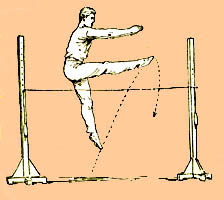 |
Climbing and Gymnastics A Historical Association |
 |
Climbing and Gymnastics A Historical Association |
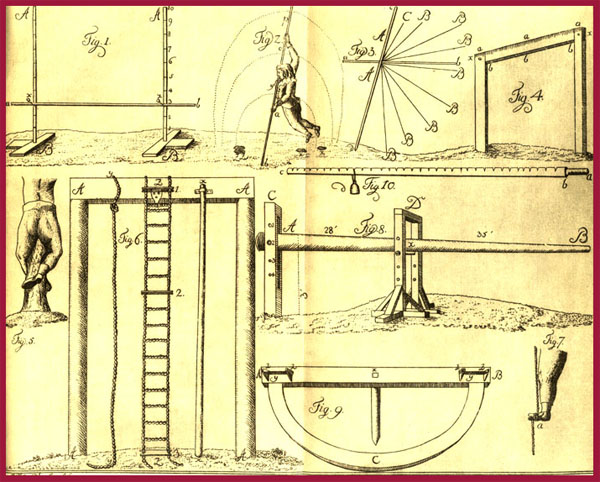 From Gymnastik für die Jugend (1793) by GutsMuths |
 Above is an 1818 print showing an improved version of F. Jahn's famous Hasenheide Turnplatz. In the center of the poster Der Einbaum can be seen, with small figures on top. The large tower to its right is either a modified version of it or some sort of observation platform. Below it is Der Zweibaum, and, on the right side of the picture, is Der Vierbaum. There was much more, of course. In Jahn's 1816 Die Deutsche Turnkunst (German Gymnastics), the author describes the exercises in the first 163 pages, arranged in 18 sections, devoted to walking, running, jumping, horse vaulting, balancing, horizontal bar, parallel bars, climbing, throwing, pulling, pushing, lifting, carrying, holding the body outstretched horizontally (flag?), wrestling, jumping with the rope, etc. During the summers spectators would frequently gather at the site of the outdoor exercises. By 1818 around a thousand turners - men, women, and children - were participating, with hundreds of people milling about, watching the gymnasts. These first gymnastic efforts were designed to strengthen German youth and morale - the Treaty of Tilsit (1807) had made large portions of Prussia mere provinces of France. Jahn, eccentric and a strong advocate of German Nationalism, lectured often on the subject, sometimes offending his audience, and this led to accusations of revolutionary principles. He was arrested in 1819 and held for a time, for "secret and most treasonable associations". |
| Prior to 1820 there were many outdoor gymnasiums (or gym fields) in Prussia. Note the gymnastics uniforms designed by Jahn, who is seen here coaching a gymnast on the side horse. | 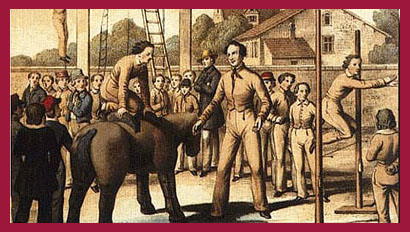 |
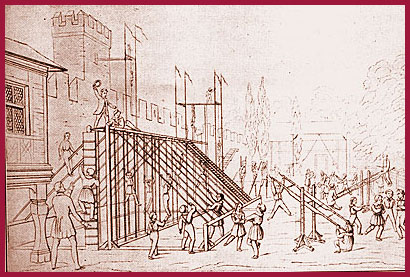 The Basel Turnplatz of Adolf Spiess
- 1848
No liability problems here! Note the children climbing on the twenty foot tower in the background |
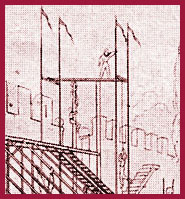
Detail of children climbing a mast and a pole or rope |